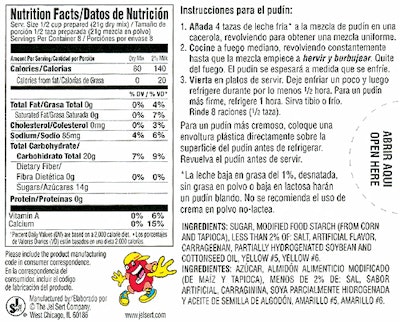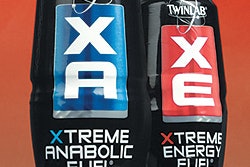
With Hispanics now the largest minority group in the United States (see sidebar on opposite page), an increasing number of companies such as Gatorade, Nestle, and Kraft (see sidebar below) have turned their attention—and packaged products—toward this group.
For example, in Spring 2003, Kerns brand of tropical nectars from Nestlé added Aguas Frescas in three flavors popular among Hispanics in California and Arizona. The ½-gal reclosable aseptic cartons in Horchata, Tamarindo, and Fresa varieties were introduced specifically with Hispanic consumers in mind. Some 40% of respondents to a recent Packworld.com survey (see chart, page 62) reported that they planned to introduce packaging in the U.S. that includes Spanish-language copy.
Exemplifying of this trend, one company in particular is strengthening its long-standing commitment to Hispanic markets. The Jel Sert Co., West Chicago, IL, offers bilingual packaging in the U.S. in three product categories. Marketing director Santosh Padki says, “All marketers are looking at the growth in Hispanic population, including us.”
This year, Jel Sert has introduced 20 products in bilingual packaging, 13 of which are Royal-brand gelatin and pudding dessert mixes. Acquired from Nabisco in 2000, Royal had been sold in countries throughout South and Central America.
Bilingual “Royal-ty”
“Royal was already a very dominant Hispanic brand, which is a very good foundation for us to serve those consumers’ needs in the United States,” says Padki. “We are already a trusted friend in their respective countries.”
Padki emphasizes that Hispanic consumers are not represented by just one country and one type of consumer, but by several countries beyond Mexico. “We are cognizant and respectful of each group,” he says. “Each has different preferences for products and flavors. If a flavor appeals strongly to Cubans, we take their input into consideration.”
Jel Sert also taps into its own employees’ unique expertise—its human resources manager is Cuban, for example—during package development with a quick in-house panel review.
“Some of our other employees are from Mexico, some from Argentina,” he says. “That’s a great asset to have.”
Padki emphasizes the importance of sticking to package design fundamentals. No matter the language or market demographics, Padki urges marketers to understand the core appeal for the brand’s target audience.
“Don’t try to develop packaging to appeal to all Hispanics, but at least have a general core appeal,” he says. “[Hispanics] are consumers like everyone else, so maintain a lot of the traditional creative elements of package design. Icons are important to them, so each of our brands has its own icon associated with it.”
The following are Padki’s recommendations:
Copy must be clear and compelling. “It’s easy to get bogged down trying to translate every word, but that’s almost like talking down to consumers in this group. Don’t encumber them with copy.”
Use attractive visuals with clear appetite appeal for foods.
The “family-sized” connotation should be made clear. “This is what ‘screams’ that this is something unique for their family.”
Understand the brand equities. “If this direction is not laid out clearly up front, there’s not a whole lot of room for graphic designers to work from.”
Strike a balance between the English and Spanish elements. Make an effort to accommodate both groups.
Don’t miss the secondary target of American consumers. “American consumers seek variety for their growing taste palette and are adventurous to try something new.”
Asked if he suggests positioning bilingual copy adjacently on the same panel or on different panels, Padki says Jel Sert has done it both ways; the choice depends on the available “real estate.” One thing they don’t translate is the brand name, which remains the same. Things that are important to translate if not unique to Hispanic language include flavor names. For example, grape is translated as uva.
Family-sized portions
All of Jel Sert’s Hispanic offerings are family sized, according to Padki. “We learned that Hispanic consumers typically eat at home where they like to prepare and share food with family and friends,” he says. “Meal occasions carry a big importance, so we provide enough portions to go around.”
The company reports that, with an average of 3.6 people, Hispanic families tend to be larger than the average American family of 2.6 people.
Padki says that Jel Sert currently doesn’t offer products in the U.S. that carry Spanish-only copy, but they are “looking very closely” at that. For now, they will remain exclusively bilingual. He acknowledges that there is a lot of work underway for bilingual packaging next year throughout Jel Sert’s product categories.
“We are constantly trying to meet our Hispanic and American consumers’ changing needs—that’s how we stay relevant,” says Padki. That spells success in any language.
See sidebar to this article: Especially Kraft-ed for Hispanics
See sidebar to this article: Hispanics' growth in United States es muy grande.





















